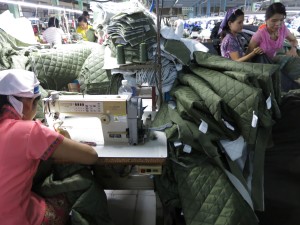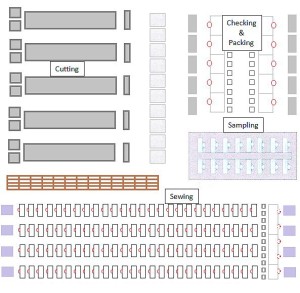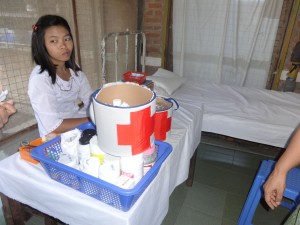Maple is a family business and is led by a new generation of business managers. Thus, it was no surprise that Maple is keen to successfully increase its business and at the same time implement good social and labour standards for its workforce.
Maple took a step-by-step approach. It first set itself the goal to enhance their production capacity. As a first measure they placed additional sewing machines on the production floor but quickly realized that this obstructed the production flow and posed a challenge for achieving the required higher daily out-put. So they decided to do away with the space constraints and expand their sewing department using an area which was previously unoccupied.
Maple requested SMART Myanmar’s international experts for suggestions on how to plan the new area. As they were also considering to shift and reconstruct the canteen, the expert from ESGE Germany along with SMART’s SCP trainees visited the factory several times to take measurements of the area. Based on these dimensions the consultant created a floor plan.
Maple was inspired by this layout and implemented the majority of the suggestions. They were particularly impressed by the two rack station system. One functions as a partition between cutting and sewing department and another between sewing and finishing department but does not separate them. One rack station is for “bundles ready for sewing” and the other one for “bundles ready for finishing” that allows the department in-charge to overview the production feeding and work progress at any given time without having to move between sewing and finishing production floors, and communicate with responsible. According to Mrs. Winnie (Maple Executive Director) this “indirect communication” facilitates a smooth work flow and production planning.
The cutting department caused high and unnecessary raw material wastage, by not cutting the inner lining according to the paper pattern. The lining was only cut out roughly along the contours of the pattern and needed to be re-cut by hand to fit the size of the main fabric.
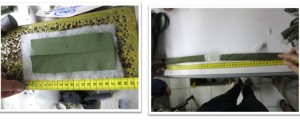
Suggestion by SMART Myanmar´s German garment technician:
The sewing line in-charge was instructed to insist on receiving correct cuttings from cutting department to avoid unnecessary work steps. As noticed in many other Myanmar factories the cutting departments often hurries to finish their job quickly without being aware that they cause additional work for other departments. For example cutting 100 pieces might be completed in one hour but for sewing it takes one day. So staff of the cutting department should generally be made aware on how important their job is as quality of their work influences the efficiency of the other operations.
Based on this example and an annual capacity of 600 000 pieces (50 000 pieces per month) the savings of material and labor amounts to approximately US$ 3 600 :
Labor cost 34,6 %
Material cost 65,4 %
Direct savings for Maple = 1 245,60 US$ labor cost
Direct savings for customer = 2 354,40 US$ material cost
Comment from Ms. Winnie, Managing Director of Maple: “Very practical, easy to catch up and efficient. It will be much better if expert or in-charge from SMART (trainer) can implement (it) together (with us) in the factory by leading as an example “
Maple also participated in SMART Myanmar’s Social Compliance Academy conducted by Sustain Consulting.
Within only eleven weeks the management of Maple implemented successfully 14 out of 19 improvement measures. The implementation of the remaining 5 measures is in process.
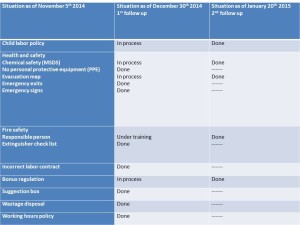
Special praise: Maple installed a fully equipped medical treatment room with full time hired nurse.
Calculation: Labor cost per minute x time for hand cutting + wastage in cm² x lining cost



